When you think of the most endangered species in the US, your mind may conjure images of fragile butterflies, rare birds and elusive prairie wolves. But over 800 plants are listed as threatened or endangered under federal jurisdiction, and thousands more are protected at state level. Many of them are wilder, weirder and just as beautiful as the endangered animals with whom they share their habitat.
What’s more, the continued flourishing of diverse botanic life in the US and the wider world is essential for the well-being of the ecosystem on which we depend.
Back in February, we created an illustrated guide to America’s most endangered animals. Now, we think it is time to put our plant life in the limelight. We’ve used the United States Department of Agriculture’s resources to identify the most endangered or threatened plant in every US state, and created a series of posters to draw attention to each species’ plight.
 1. Alabama: Canebrake Pitcher Plant
1. Alabama: Canebrake Pitcher Plant
The Canebrake Pitcher Plant looks like it is about to burst into song. But in fact, this perennial herb’s surprise behavior is a little darker than that: it eats insects for lunch! Human-made changes to the green pitcher plant’s limited habitat have kept it on the endangered list for over forty years.
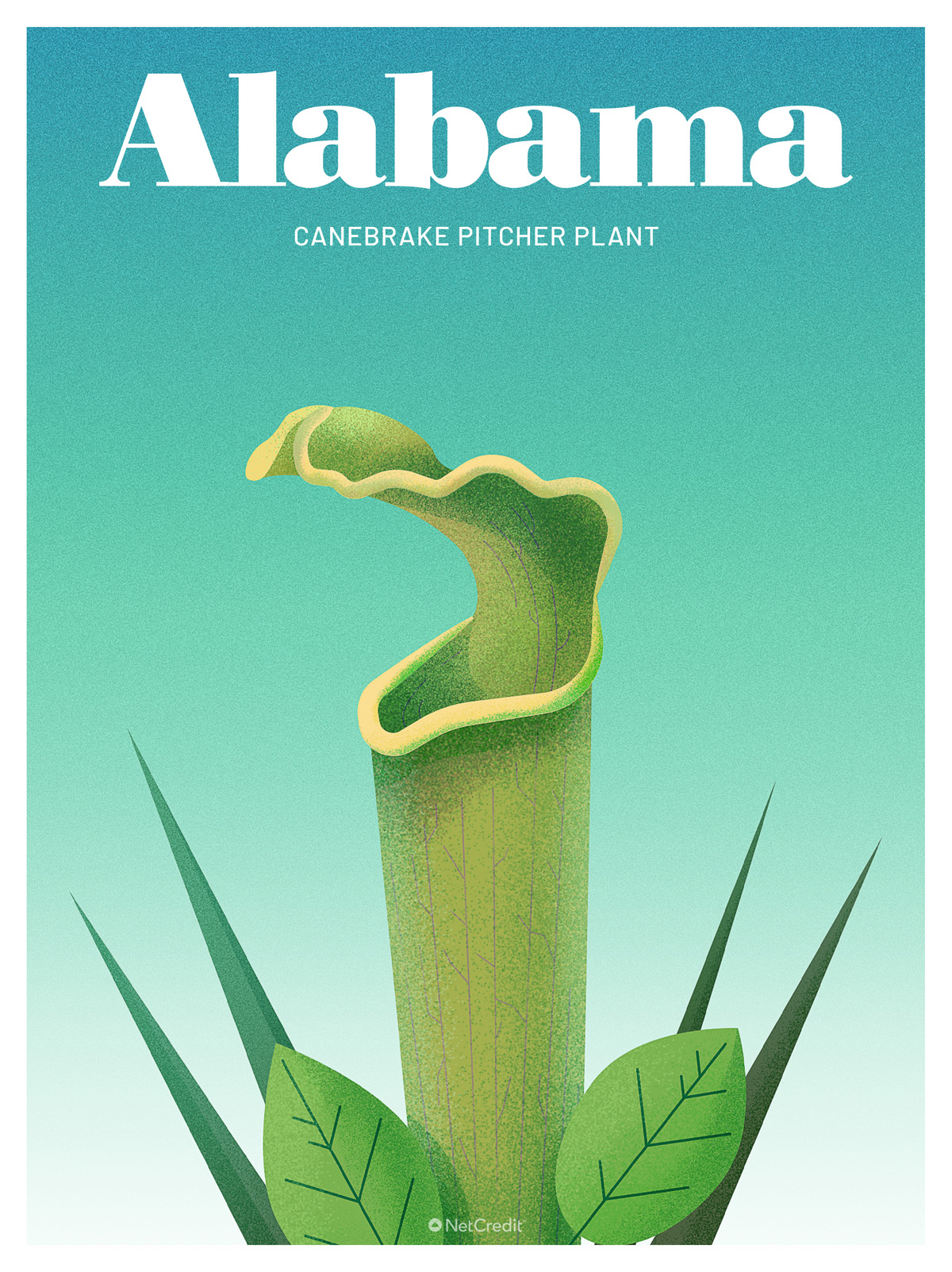
2. Alaska: Aleutian Holly Fern
This super-rare fern is Alaska’s only native endangered plant. It is found only on Adak, one of the Aleutian Islands. This olive green, six-inch plant lives alone rather than in groups and holds on to the dead leaf remnants around its roots. Only around 150 Aleutian Holly Ferns remain.
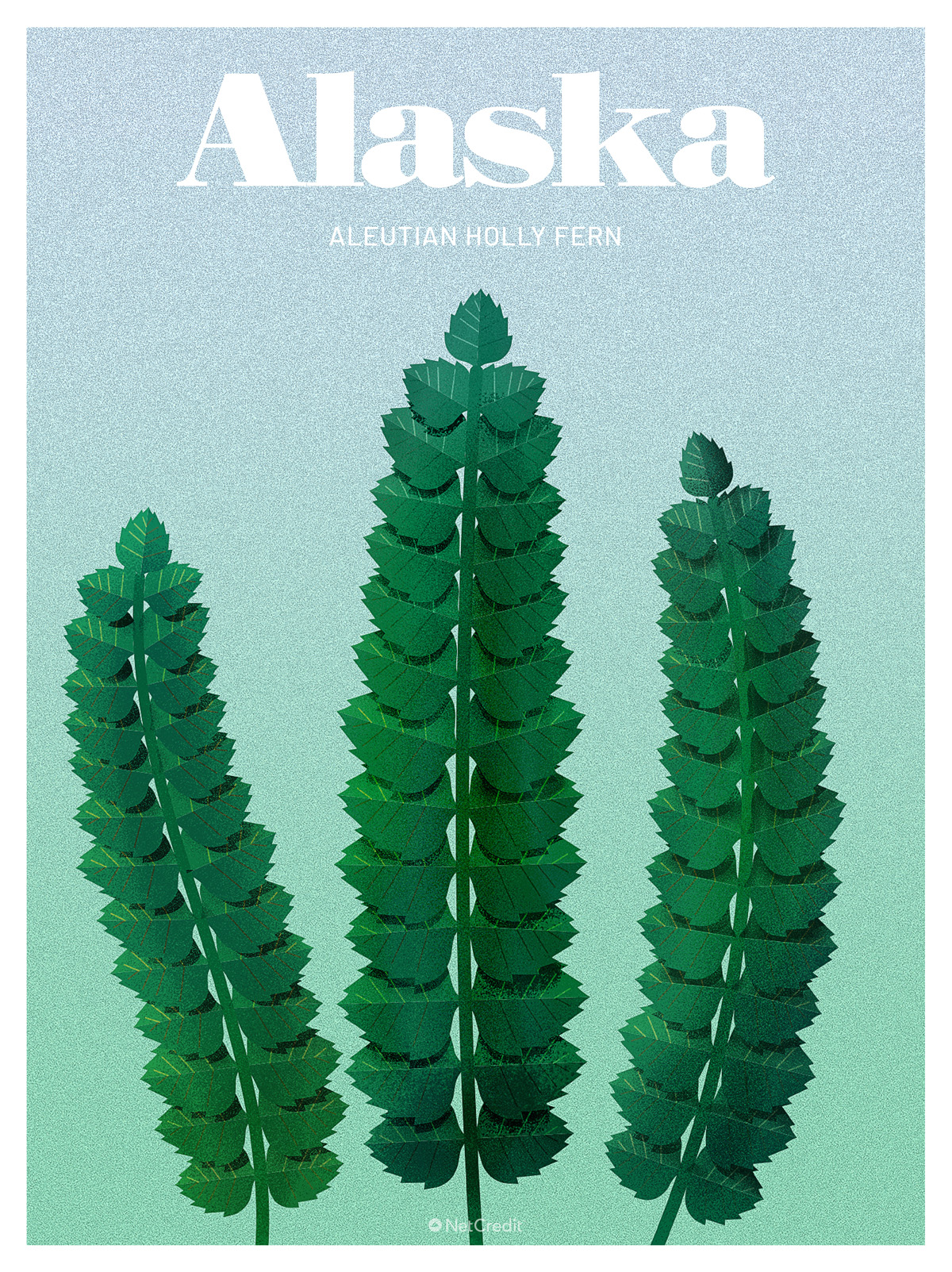
3. Arizona: Nichol’s Echinocactus
The ‘Nichol’s Turk’s head’ cactus is only known in the Sonoran Desert of south-central Arizona and in a single location in Mexico. The body is gray-green and roundish and coated with pink or brown spines, and a magenta flower opens from around noon until dark. Human disturbance (such as mining) to the habitat of the Nichol’s Echinocactus has seriously impacted its number.
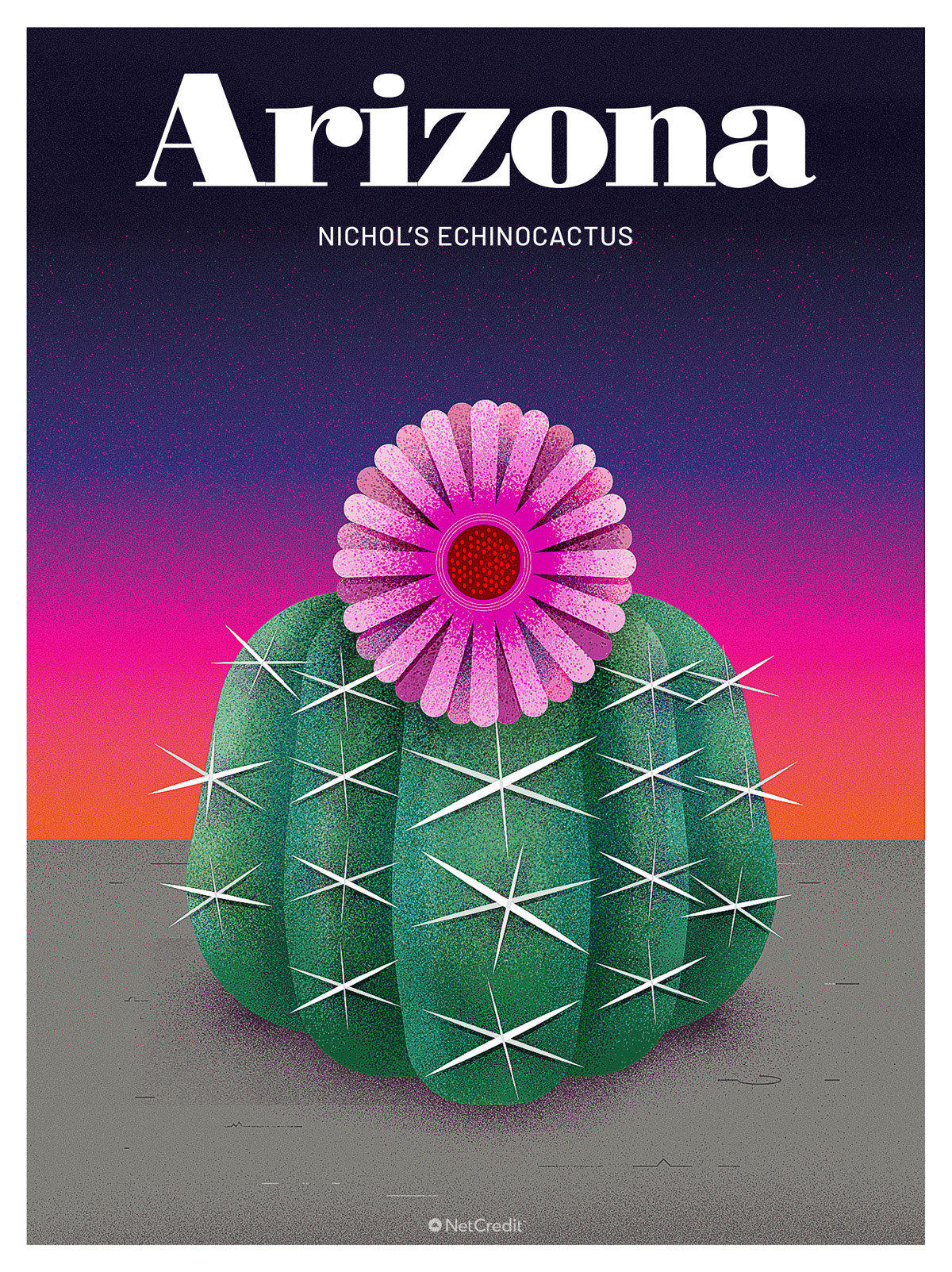
4. Arkansas: Southern Spicebush
Also known as ‘pondberry,’ this aromatic colonial shrub is found in the wetlands of the southeastern US. It is furnished with drooping, tapered leaves and clusters of tiny, bright yellow flowers. The pondberry’s pink-red berries provide food for hermit thrushes, swamp rabbits and armadillos, among others. Wetland drainage and habitat fragmentation have made it harder for the southern spicebush to breed.
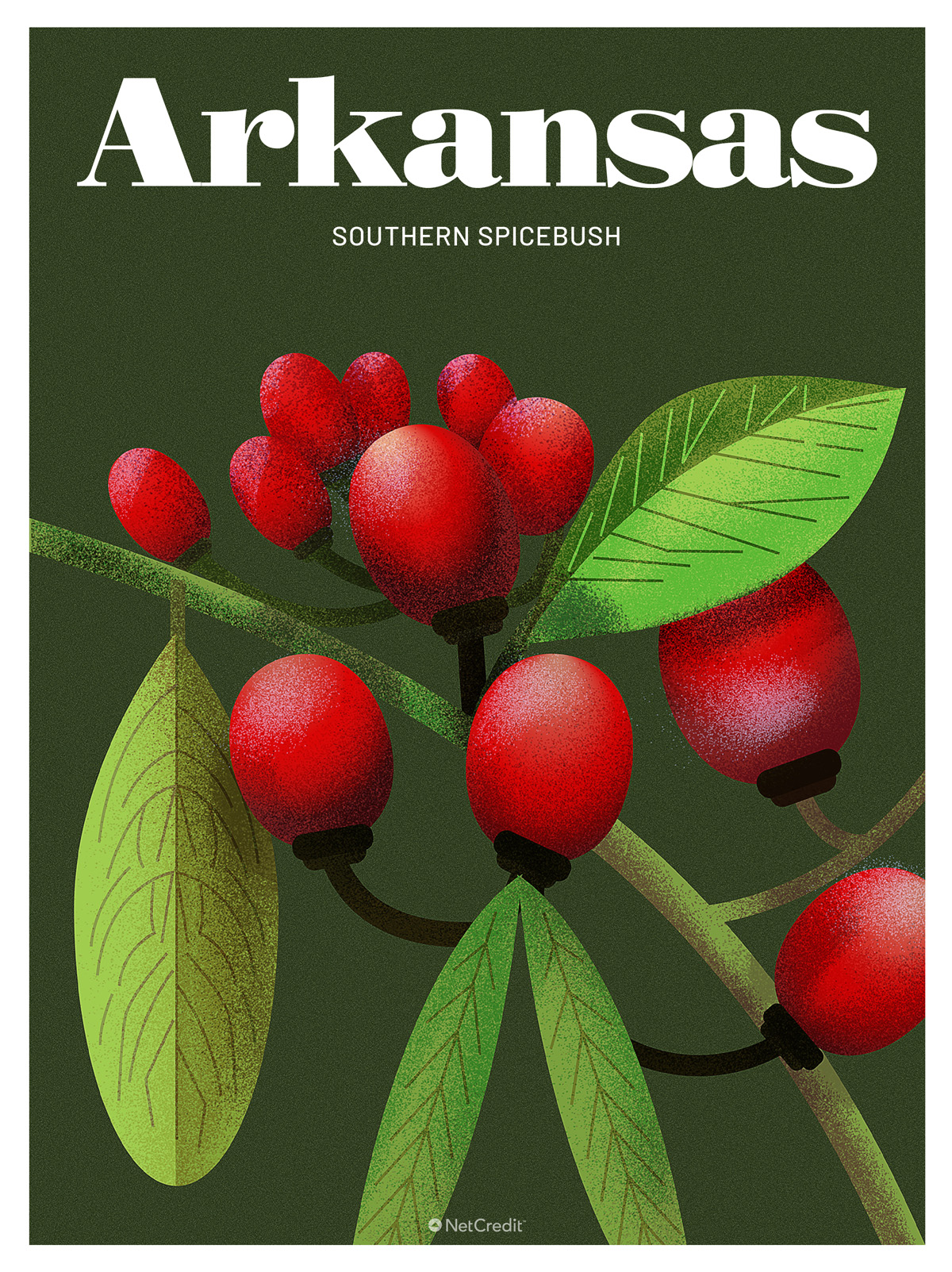
5. California: Ventura Marsh Milkvetch
This herbaceous perennial has only been spotted in seven places in the past century. It was thought extinct – with the only known examples of it discovered in lawnmower clippings at a state park – before being rediscovered in 1997 on private land that had been used to dump petroleum products. This unconventional use of the land may have saved this yellow-silver member of the pea family from extinction, as the property was otherwise due to be redeveloped.
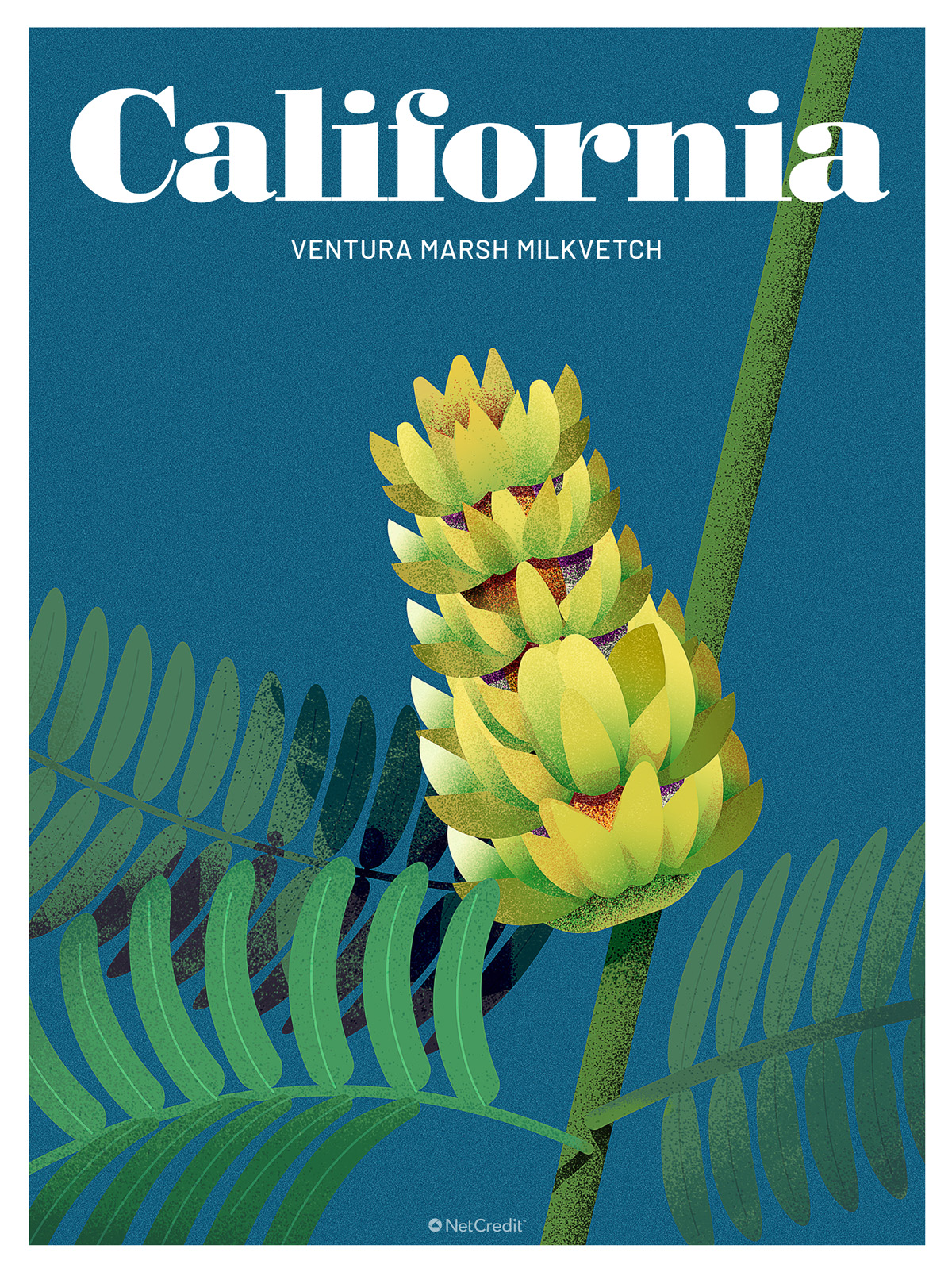
6. Colorado: Clay-Loving Buckwheat
Clay-loving wild buckwheat can only be found in the rolling clay landscapes of Colorado – hence the name. It is a fantastic-looking subshrub, just 6-8 inches tall and composed of needle-like leaves and clusters of cream and pink flowers. Not many plants can thrive in the clay-loving buckwheat’s natural habitat, which makes this endangered plant all the more valuable to the bees, ants and beetles who visit.
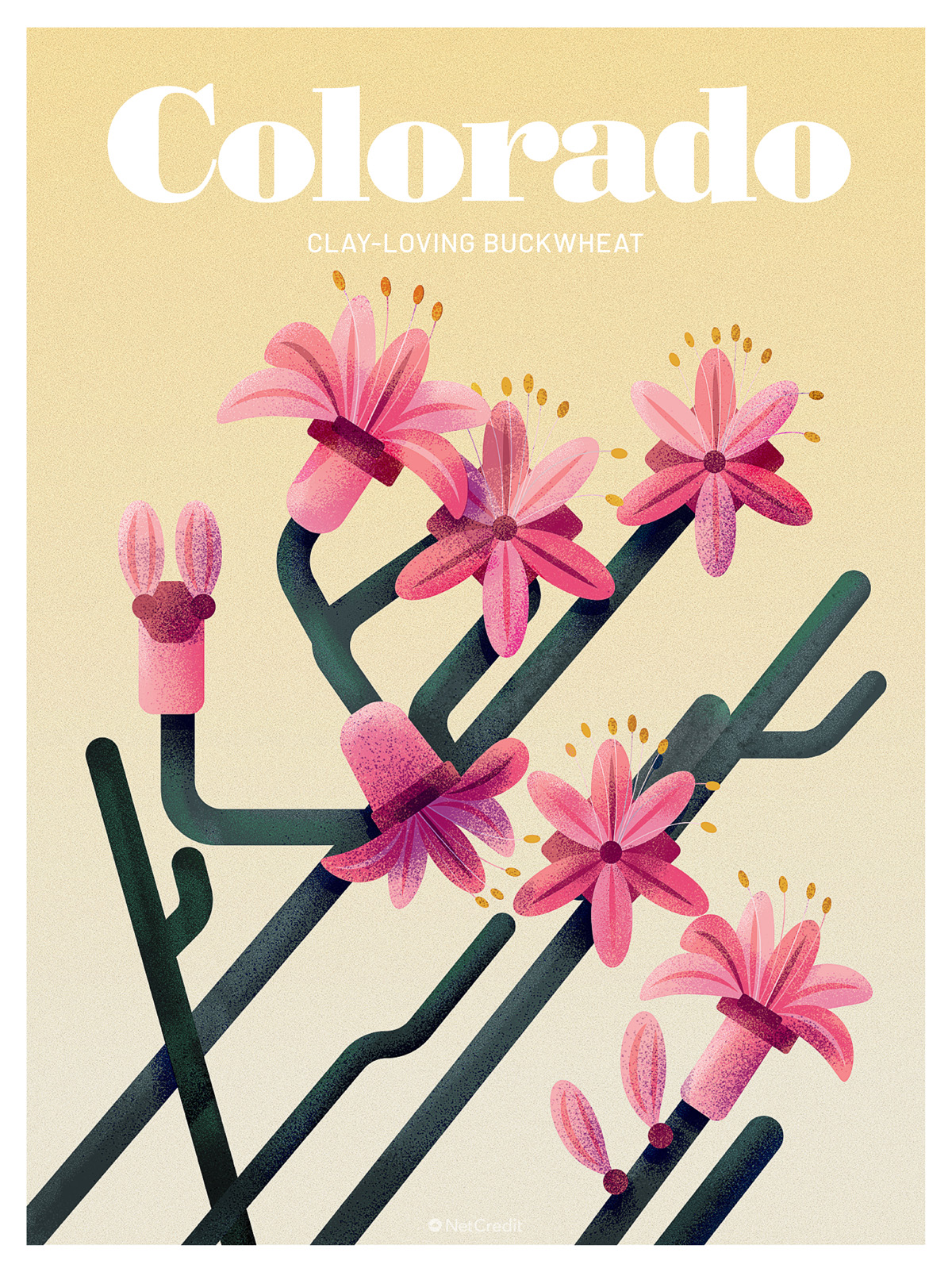
7. Connecticut: Sandplain False Foxglove
The sandplain false foxglove thrives where other plants perish: in tough, dry landscapes or those ravaged by fire, lawnmower or sheep. Despite its apparent solitude, the foxglove is a hemiparasite and requires a host plant such as a grass or forb to provide some of its nutrition. Its pink, red-spotted flowers last just one day.
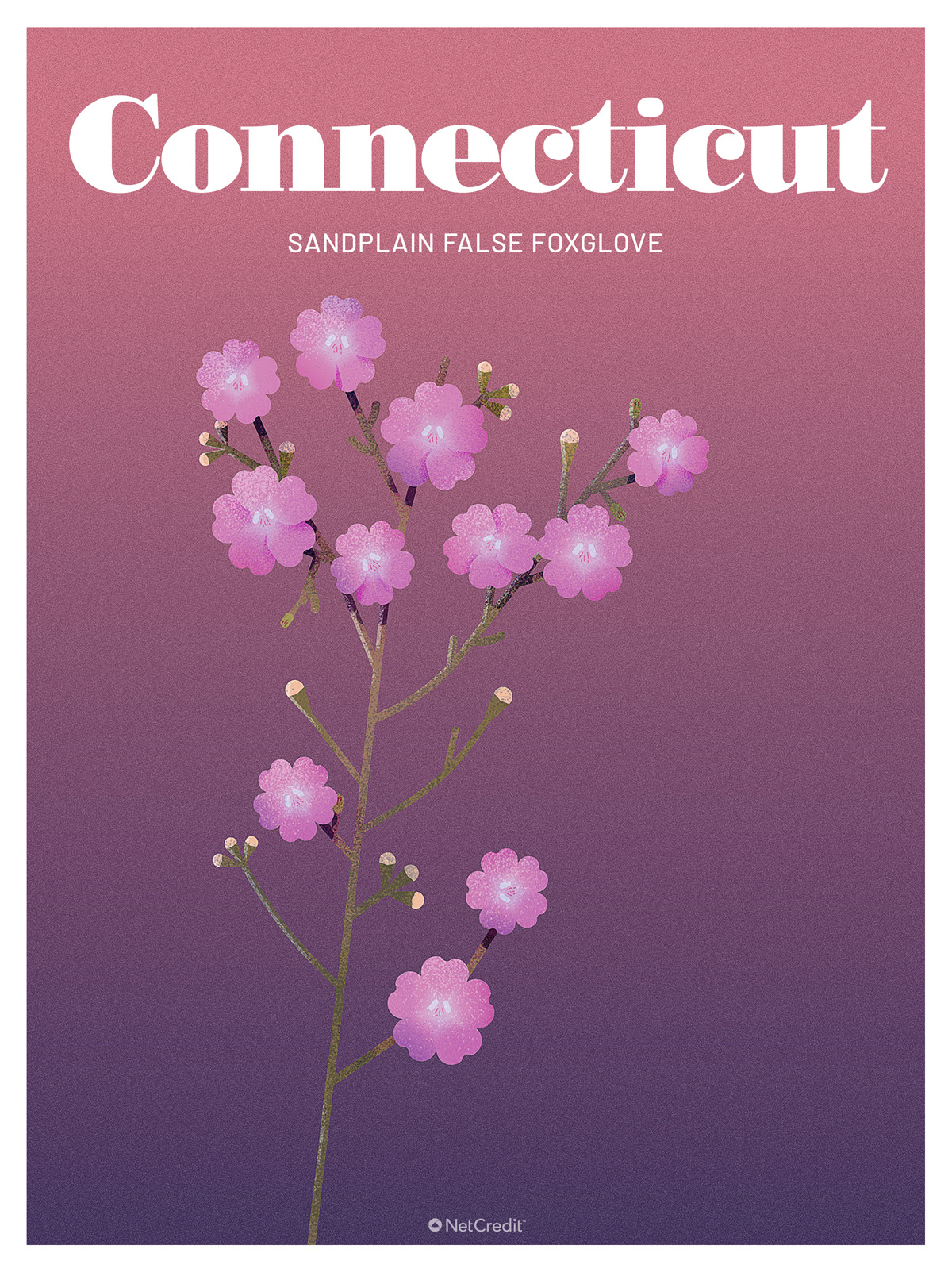
8. Delaware: Canby’s Cowbane
Also known as Canby’s Dropwort, this perennial herb stands up to five feet tall in wetlands such as sloughs and savannas. Meanwhile, underground, the herb’s wiry stems form networks with each other to create rhizomatic colonies. Great numbers of the plant get chewed through by the caterpillars that emerge from black swallowtail butterfly larvae. But the real threat to Canby’s Cowbane comes from industrial agriculture and foresting as well as fire suppression.
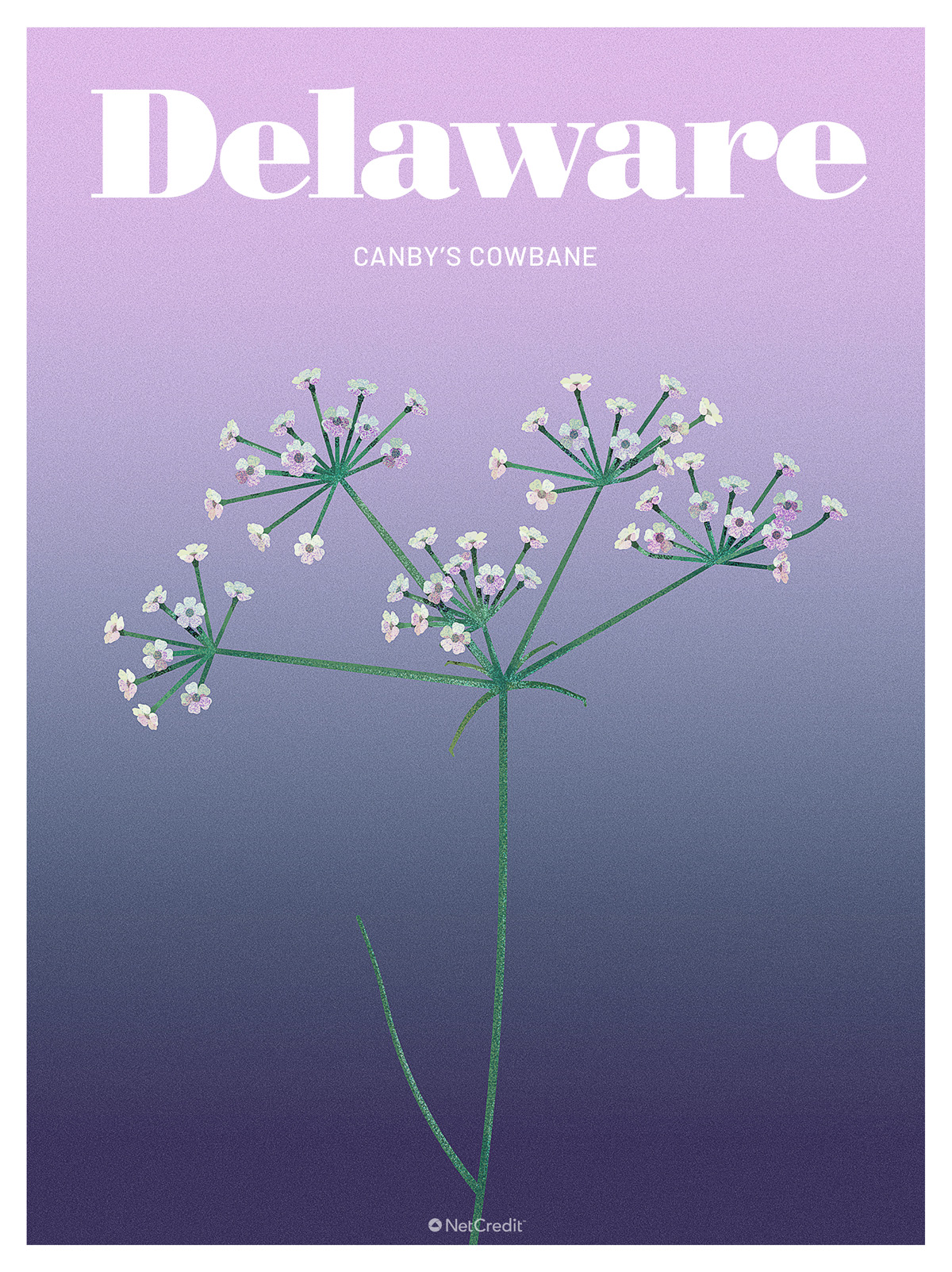
9. Florida: Avon Park Rattlebox
This duckbilled harebell was only recognized and categorized in the 1980s, despite the beak-ish flower that makes it so distinctive. It is endemic to Florida, with only three sites remaining. The low flower and fruit production that makes the rattlebox such a reluctant breeder is a problem, while the rise of nearby residential developments further tarnishes the outlook for the Avon Park rattlebox.
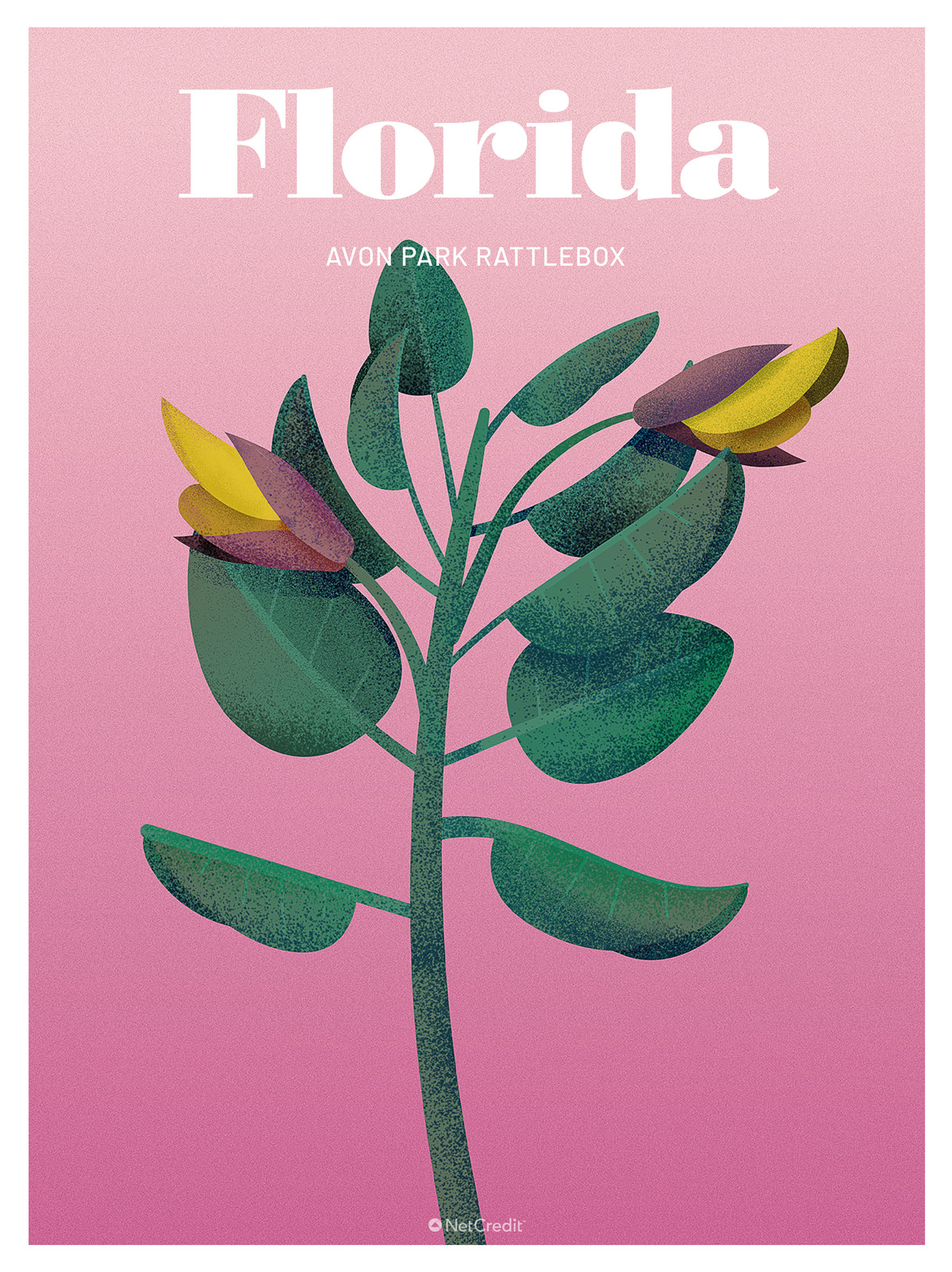
10. Georgia: Blackspore Quillwort
No, the black-spored quillwort is not a villain from the Harry Potter universe – although this aquatic plant is also known as ‘black-spored Merlin’s grass.’ Its narrow, green, grass-like leaves each contain four hollow chambers of spores, which are released when the plant dries out in the summer, and are carried away by water or insects. The quillwort’s unnatural enemies are quarrying, trash-dumping and human traffic, whether by off-road vehicle or horseback.
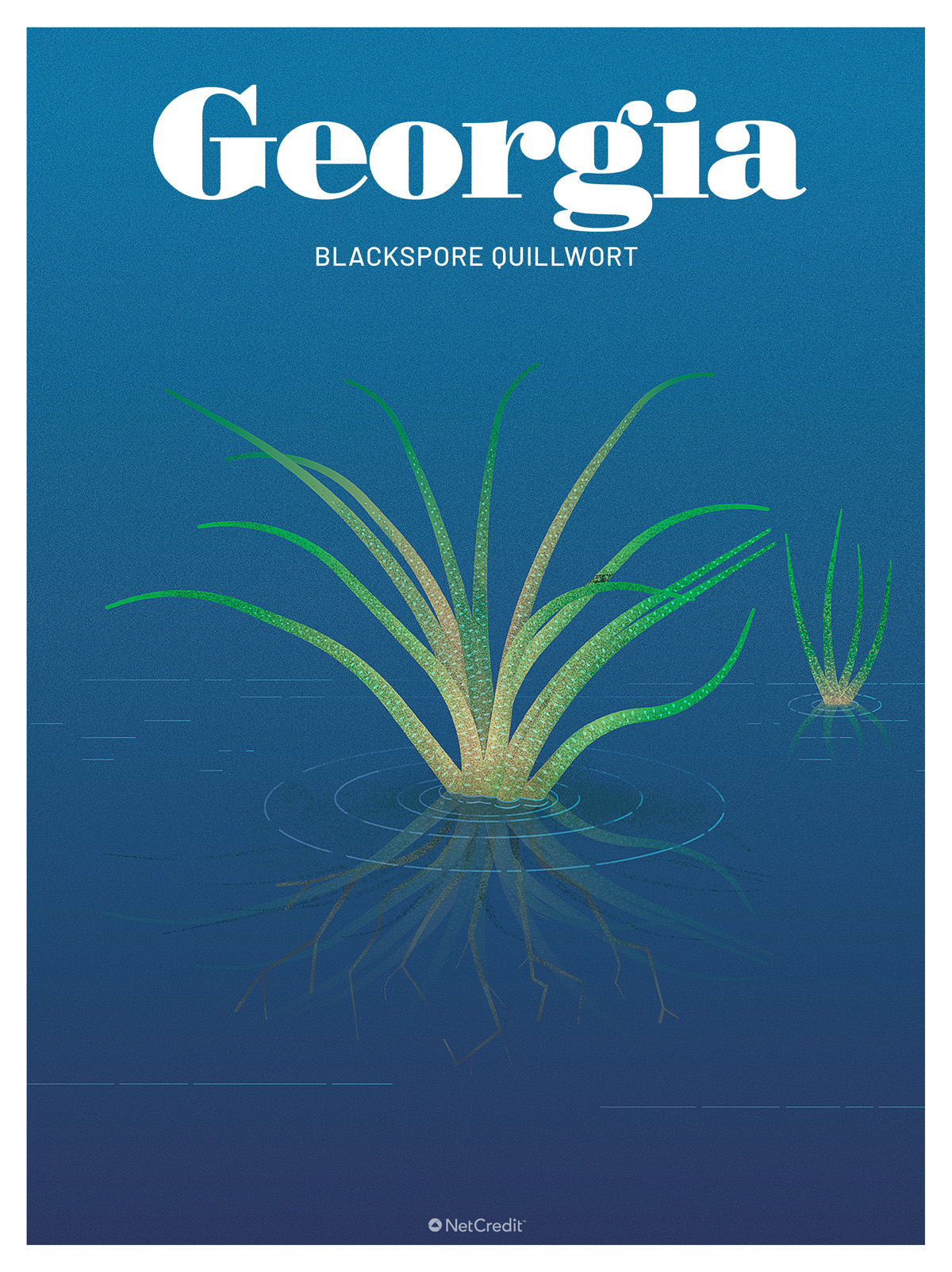
11. Hawaii: Cabbage on a Stick
Cabbage on a stick is a “thick, swollen stem crowned by a rosette of fleshy leaves resembling a head of cabbage.” It grows on the cliffs of Hawaii. The hawkmoth that was its only natural pollinator has itself become extinct, and now goats, rats and invasive weeds threaten the plant’s existence. Its last remaining natural population is so precarious that a lone human botanist (working for the University of Hawaii’s Plant Extinction Prevention Program) must regularly climb the cliff face to pollinate the cabbage on a stick by hand.
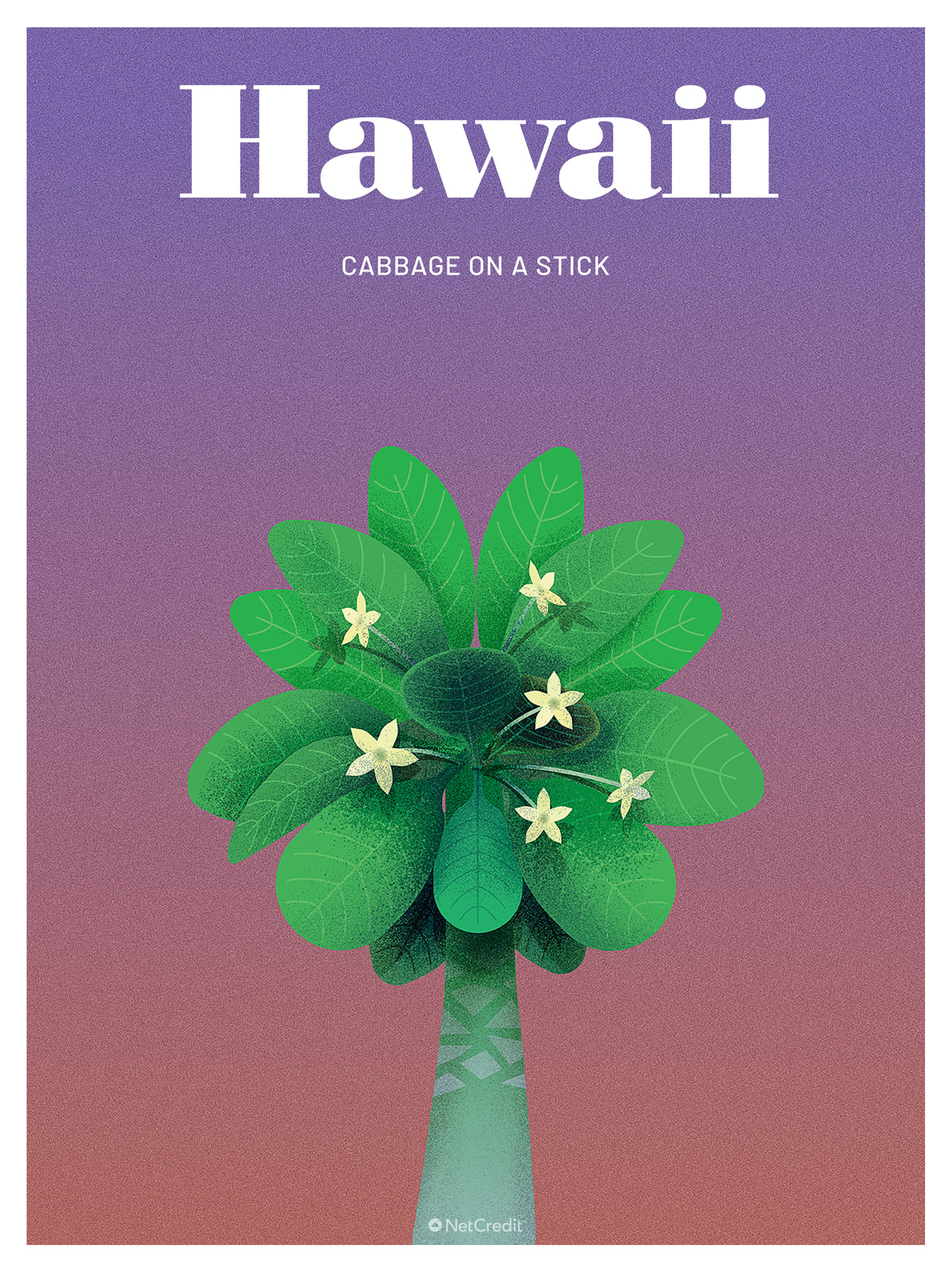
12. Idaho: Hermit Milkvetch
Also known as the Shivwits milk-vetch, this orchid-looking perennial herb is under threat from urban development, off-road vehicles, mining and grazing. It is mostly found living in purple clay soil in high, sparse landscapes. The plant faces multiple challenges reproducing and suffers from low survival rates, so it is increasingly reliant on the aid of conservationists.
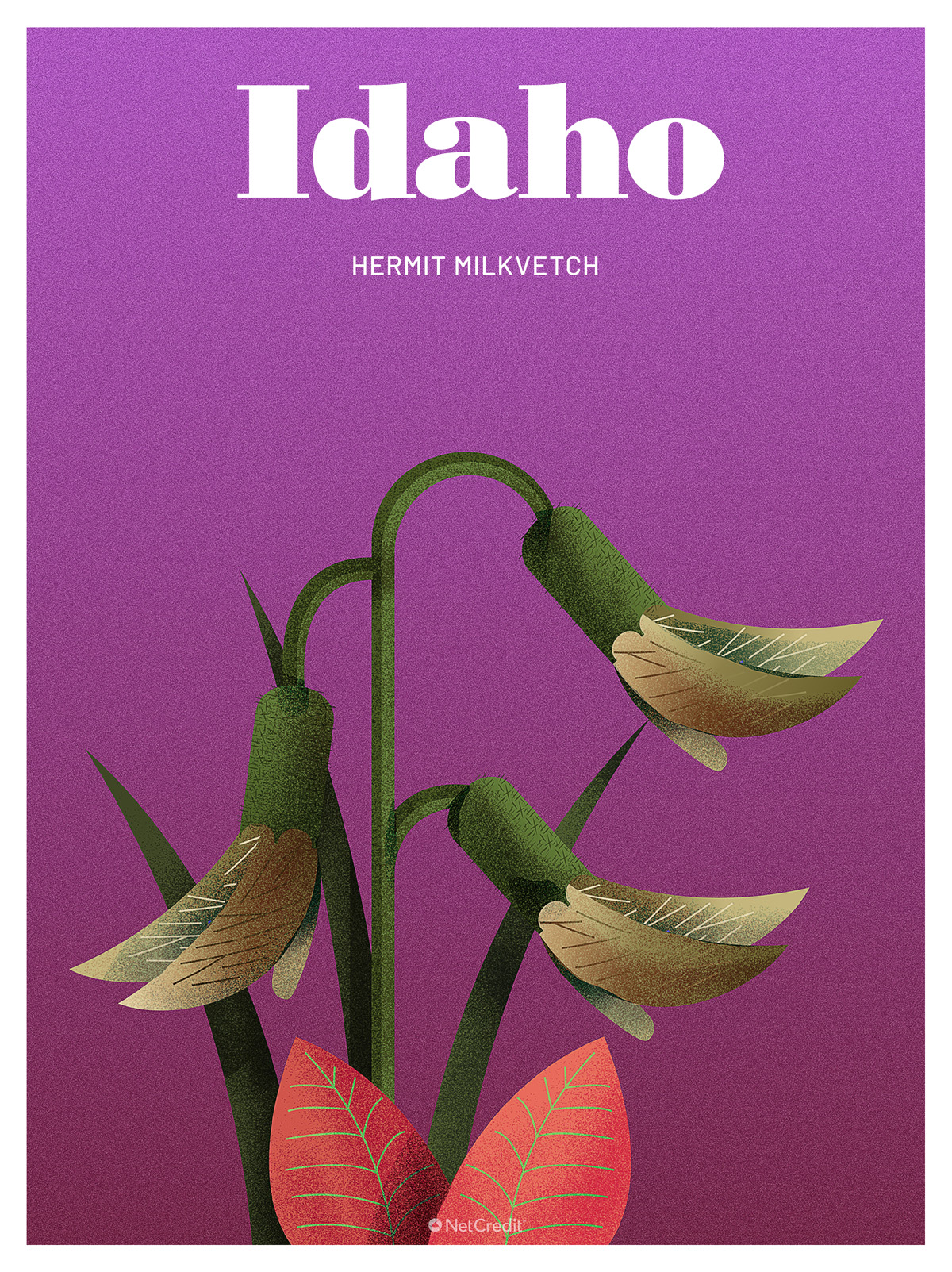
13. Illinois: Running Buffalo Clover
Horse hooves and livestock grazing may be bad news for a lot of plants, but the herds of bison that gave this plant its name were essential to its well-being. The clover flourished in the trampled earth left in the wake of the unwieldy animals – you could even track the paths of the bison by the clover they left behind. In fact, after the running buffalo disappeared and the clover was thought to be extinct, the plant was rediscovered in Jeep trails. Today, the bison are long gone, but conservationists continue to trample the plant in the hope of giving it a new lease of life.
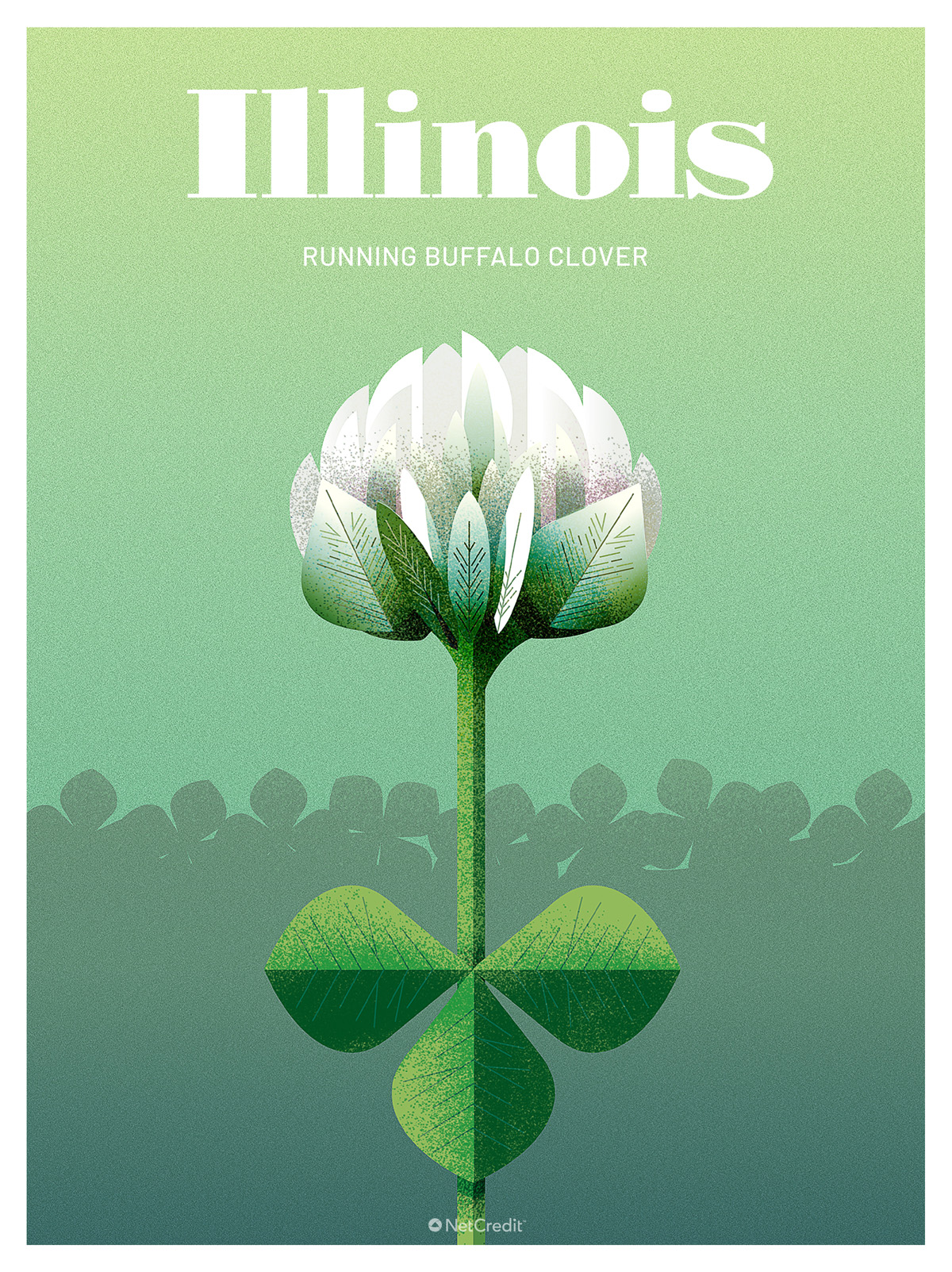
14. Indiana: Short’s Goldenrod
You’re not likely to ever see Short’s Goldenrod in the wild. Indiana’s rarest plant exists in only two places, and the Indiana Department of Natural Resources keeps their location secret. This is as much to protect visitors as it is to protect this fern-like sunflower because it lives near sudden, steep drops, a long way from the beaten path.
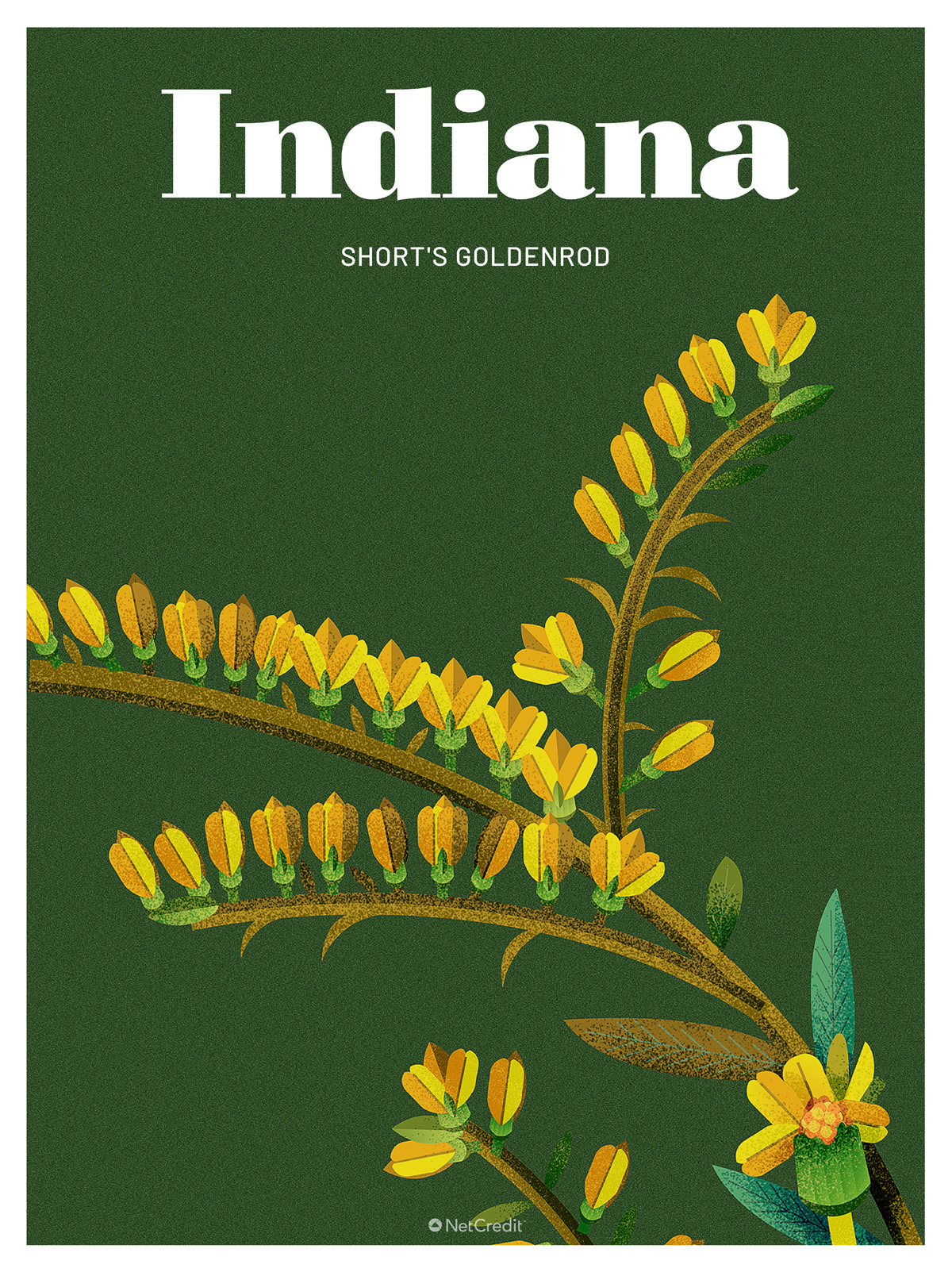
15. Iowa: Blue Giant Hyssop
The blue giant hyssop is a member of the mint family and gives off a scent of anise when its leaves are crushed. It features lilac-blue tubular flowers, up to six inches long, and gathered together in tightly packed clusters. The plant is in short supply in Iowa, which is at the geographic extreme of the hyssop’s habitable landscape.
 16. Kansas: Mead’s Milkweed
16. Kansas: Mead’s Milkweed
This herb has a single, hairless, waxy stalk leading up to leaves and an umbel (umbrella-shaped cluster of flowers) of a dozen or so cream-green flowers. Miner bees and small bumblebees are their primary pollinators. Unfortunately, these bees don’t bother to visit smaller populations of milkweed – such as those affected by habitat fragmentation. Other reasons for this tallgrass prairie herb’s threatened status are habitat loss and the mowing of the hayfields where it grows.
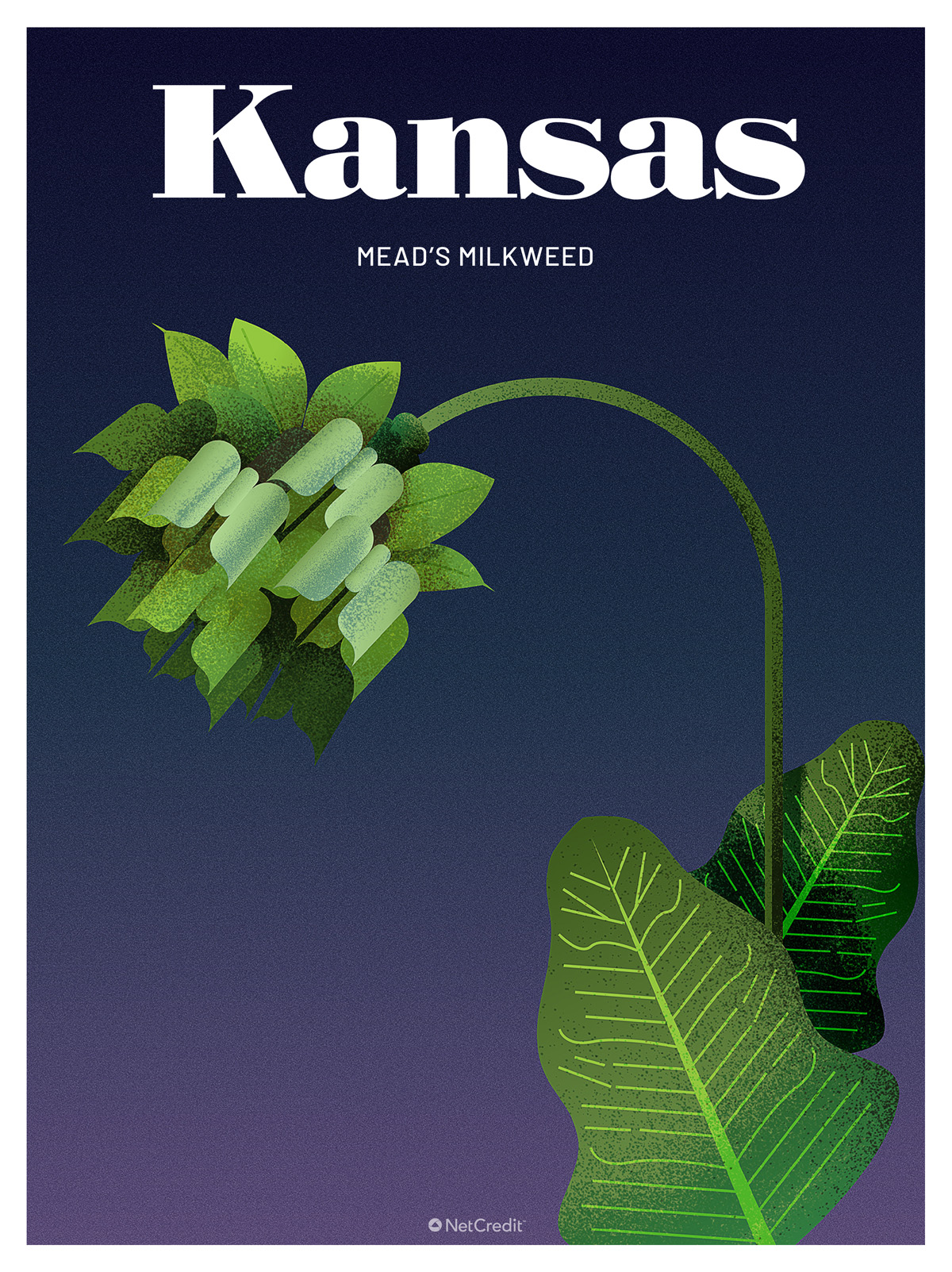
17. Kentucky: Filmy Angelica
The filmy or mountain angelica boasts a greenish-white compound umbel of up to two-dozen umbellets – umbels within an umbel. The flowers seem to make bees drunk, so they may be poisonous. In late summer, the flowers transform into stripy, pumpkin seed-shaped seeds. It grows up to six feet tall at elevations thousands of feet high. It is endangered in Kentucky and Maryland.
 18. Louisiana: Louisiana Quillwort
18. Louisiana: Louisiana Quillwort
This grass-like aquatic herb can be found in just three places in Louisiana. It lives in shallow, running water, rooted in silt, sand and gravel. Two of the populations number in the hundreds, while the third has just four immature plants. The Louisiana Quillwort depends on a certain quality of light provided by the canopy above. Loss of such canopies and the impact of industry on the water quality threaten the ongoing livelihood of this plant.
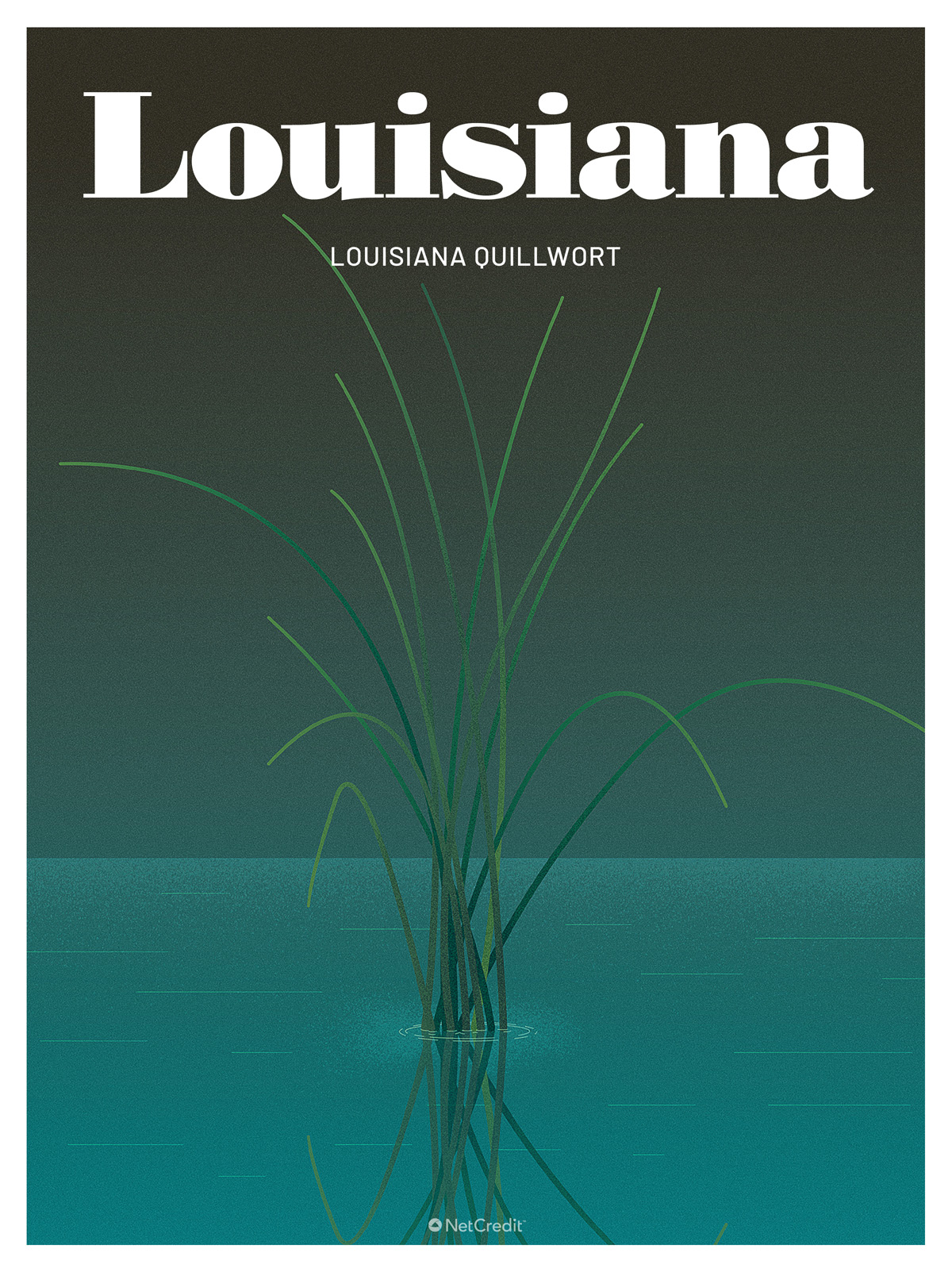
19. Maine: Furbish’s Lousewort
Maine’s only federally endangered plant was the first to be named after a female botanist. Kate Furbish categorized it as Furbish’s wood betony in 1880. “Had I listened to those who discouraged me from going into that part of the state because the Flora would not be likely to repay me for the expense and fatigue, I should be as ignorant as they are of its natural beauties,” Furbish wrote of the expedition that put her in the history books.
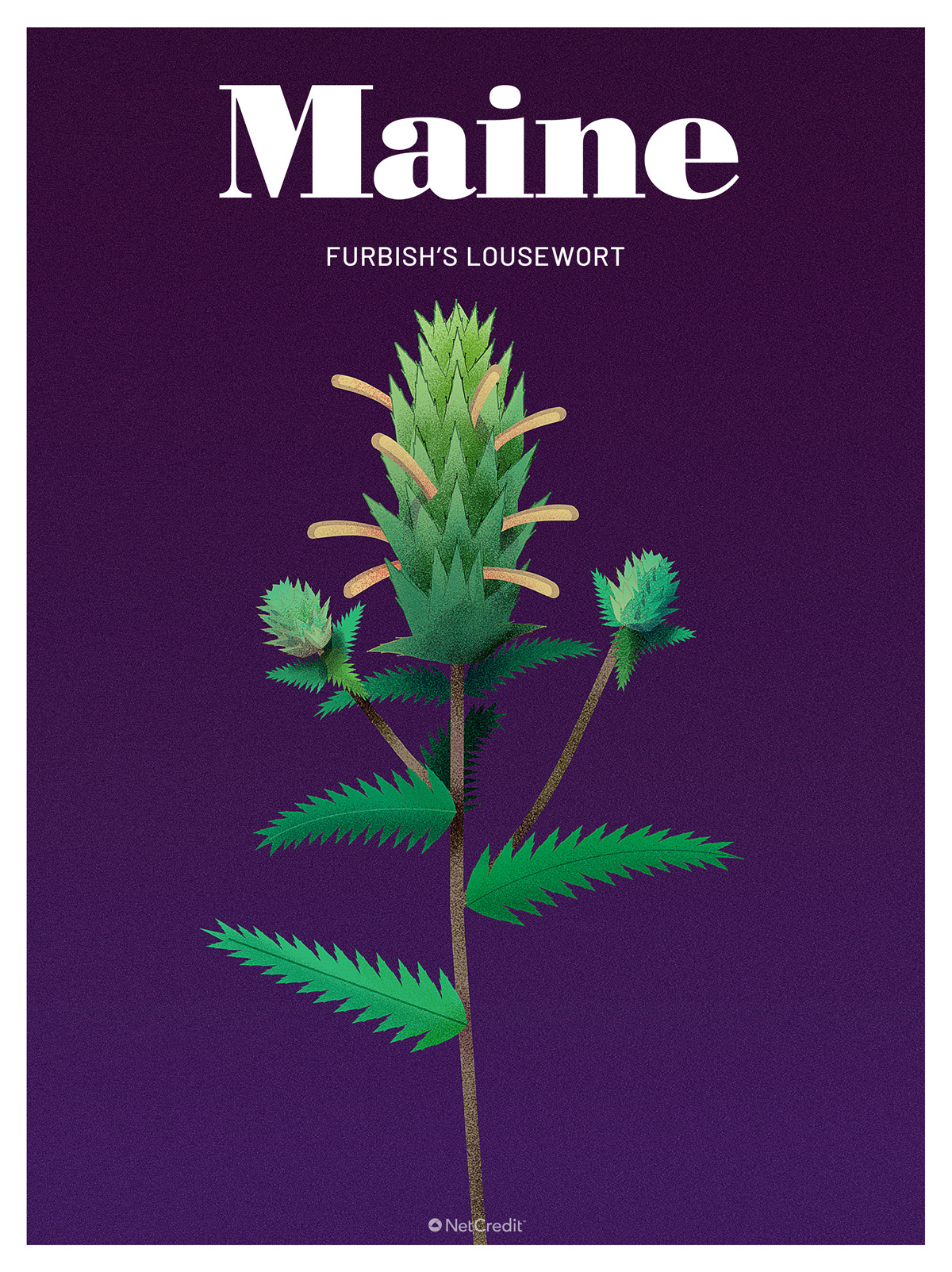
20. Maryland: Barbedbristle Bulrush
The Barbedbristle Bulrush is also known as the Northeastern Bulrush and lives in the ponds and shallow waters of Maryland and surrounding states. It has very long, thin leaves, barbs and bristles, brown scales and toothed spines, giving it a distinctly unfriendly look. But despite its tough exterior, the plant is vulnerable to a range of habitat disturbances, including water pollution, development and off-road vehicle use. Around half of its known populations are in decline.
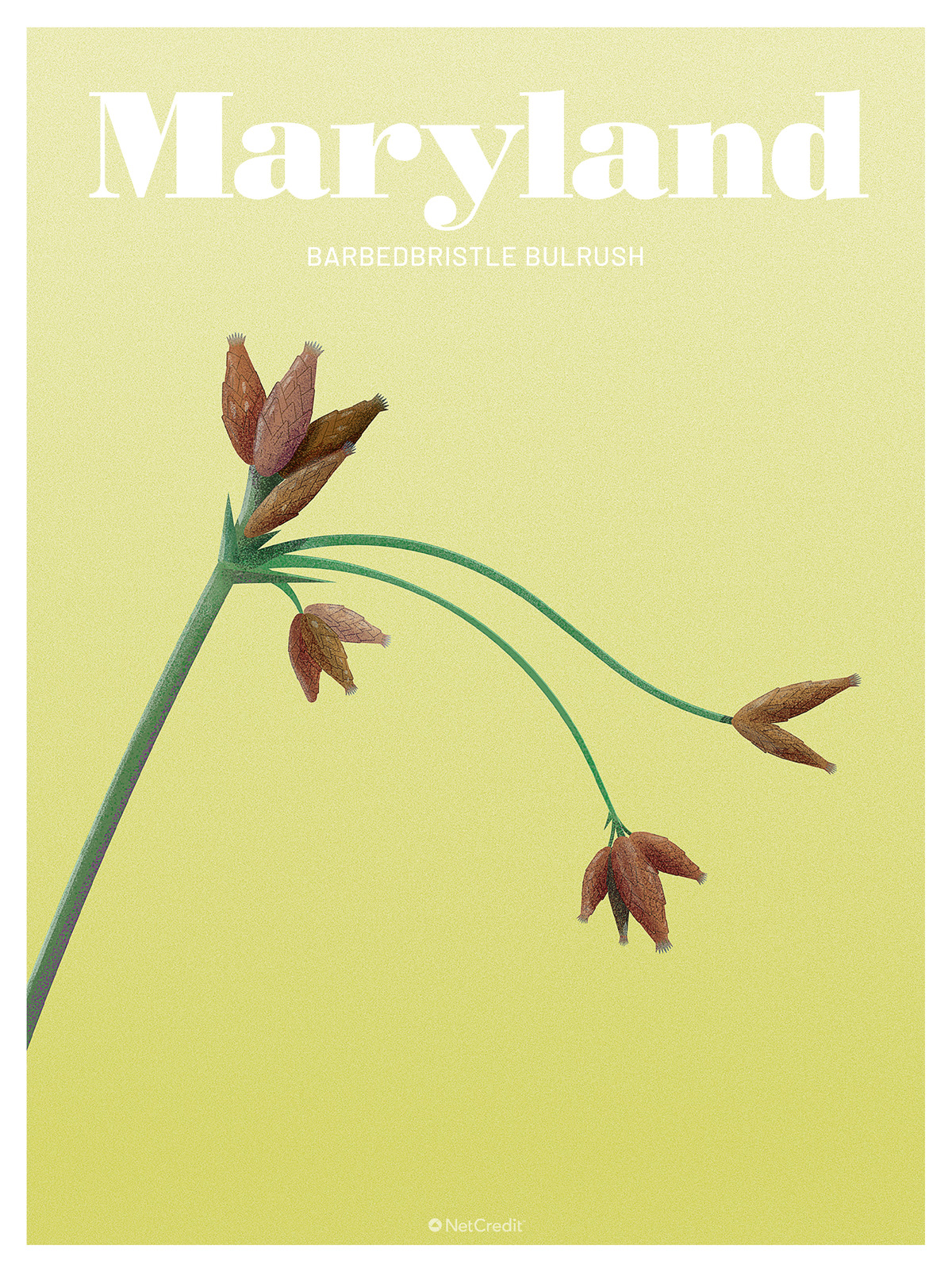
21. Massachusetts: Adam and Eve
The ‘putty-root orchid’ grows out east in cool climate deciduous forest regions. It gets its biblical name from the twin corms (bulb-like organs) that make up its roots. The corms produce a single, plaited, blue-green pinstripe leaf, crimson underneath, that dies in the spring to make way for a stem of green-purple flowers.

22. Michigan: Michigan Monkeyflower
Michigan’s only endemic plant is rarely found anywhere but the shores of the Great Lakes. However, a botanist once discovered a sprig of the yellow flower on his plate in a restaurant, served as a garnish – leading to the discovery of a previously unknown population. As a semi-aquatic plant, the monkeyflower depends on a good position in the sunlight and the steady flow of cold, clean water. Unfortunately, the latter has been compromised by groundwater pumping and urban development, along with natural disruptions.

23. Minnesota: Minnesota Fawnlily
Also known as the Dwarf Trout Lily or Minnesota Adder’s-tongue, the tiny ¼-inch-long Minnesota fawnlily features a prominent, snake-ish stigma. This fawnlily is only known in three counties in Minnesota and is not found outside of the state.

24. Mississippi: False Rosemary
There’s something quite wonderful about False Rosemary. Its lavender-colored two-lipped flowers also give a lavender-like smell, and its snowy green needles have the look of a softer, finer rosemary – hence the name. In addition to its fairytale appearance, the shrub forms part of the beach mouse’s habitat and is pollinated by hummingbirds, butterflies and bees, giving it the full Snow White magic.

25. Missouri: Virginia Sneezeweed
This variety of Sneezeweed is found only in Virginia and Missouri. It grows in wetlands up to a height of 3½ feet. It is hardy enough to tolerate grazing livestock and even mowing, but the impact of cattle on the soil may contribute to its plight. Off-road vehicle use, logging and other development around the wetlands are also bad news for this plucky yellow wildflower.

26. Montana: Streambank Wild Hollyhock
The streambank wild hollyhock is immediately noticeable for its proud raceme (long cluster) of pink/rose-purple heart-shaped flowers. Its stems are coated in tiny, star-shaped hairs. It grows at heights of up to 7,500 feet, on moist canyon slopes and along streams. Fire suppression has led to massive population decline, as this perennial depends on direct sunlight for growth and seed germination.

27. Nebraska: Blowout Beardtongue
The blowout beardtongue is found only in north-central Nebraska and the Red Desert of Wyoming. As the name suggests, this perennial forb grows in the sand hollows left by winds (or symbiotically with nearby blowout grass). The taming of wildfires and the stabilizing of sand dunes has reduced the beardtongue’s habitat. Conservationists in Nebraska have been busy planting thousands of new seedlings with mixed results.
28. Nevada: Amargosa Niterwort
This tough little Chenopodiacea grows in the salty clay soil of the Ash Meadows nature reserve. It is often found growing alone since other plants can’t handle the levels of salt the Niterwort requires. However, it is also the only endemic plant in the refuge to be listed as endangered – mostly due to agriculture, mining and groundwater development. Rhizomatous roots connect colonies of the Armagosa niterwort underground.

29. New Hampshire: Jesup’s Milkvetch
The Jesup’s milkvetch is a fern-like legume boasting clusters of tiny violet flowers or inch-long sea pods, depending on the time of year. It is also a survivor. It lives in the silty crevices of steep rock formations through New Hampshire’s dramatically changing seasons, withstanding drought, ice and flooding. However, climate change has pushed this plucky milkvetch’s durability to its limits. With just a couple of thousand remaining, conservationists are working hard to support existing populations and to seed new ones.
 30. New Jersey: Chaffseed
30. New Jersey: Chaffseed
So-called “American chaffseed” – the greatest in the world! This perennial figwort grows up to two feet high and sprouts a cluster of purple-yellow tubular flowers in the summer. It requires moist conditions but also relies on wildfires to keep it in the open. Unfortunately, fire suppression, collecting and habitat disturbance have wiped it out of some states and put it on the endangered list in New Jersey.

31. New Mexico: Holy Ghost Ipomopsis
The Holy Ghost ipomopsis hit the headlines in 2013 when firefighters saved the original population from a 10,000-acre forest fire in the Holy Ghost Canyon. The fire service had to work closely with the forest service to ensure that the plants were neither burned nor trampled underfoot as firefighters worked. It would have been a sorry end for the picture-book purple tubular flower, which had only been identified a quarter of a century previously.

32. New York: Arnica
This North American take on the well-known arnica plant is nicknamed clasping arnica or lanceleaf arnica. Arnica is a member of the sunflower family. This particular species boasts a small, daisy-shaped flower of yellow petals around a center of brown, tubular disk flowers. It is rare around the world, and the New York populations are particularly vulnerable because they grow in small enough groups to be wiped out in a single disturbance.

33. North Carolina: Jones’ Pitcher Plant
The sarracenia family has been known to science since the 16th century when botanists first brought it to Europe from the Americas. But it took them a couple of centuries to realize that when insects disappeared into its maroon tubular pitchers, they were not taking refuge there, but being eaten alive by this carnivorous plant. Tempted by its sweet smell and seductive appearance, flies land inside the tube and slip down the waxy inner surface. Paralyzed by the nectar, they are ‘digested’ at the bottom. Sarracenia jonesii is named after the sarracenia expert F.M. Jones.
 34. North Dakota: Great Plains White Fringed Orchid
34. North Dakota: Great Plains White Fringed Orchid
The ghostly, icy-fingered fringes of this stunning orchid surely make it a contender for the new baddie in the next series of Stranger Things. It is pollinated by a variety of moth species, who get pollen grains on their compound eyes while they feed on the nectar. The white-fringed orchid’s number has plunged dangerously due to agriculturalists converting its prairie home to cropland.

35. Ohio: American Globeflower
This long, thin buttercup is crowned by a delicate flower of pale-yellow petals and orange-yellow stamens. Drainage and loss of wetlands greatly reduced the globeflower’s number throughout the twentieth century, and surviving populations are inhibited by habitat fragmentation, drainage and flooding.
 36. Oklahoma: Prairie White Fringed Orchid
36. Oklahoma: Prairie White Fringed Orchid
The flower stalk of the prairie white-fringed orchid is nearly fifty inches long, with up to 40 of those ghost-like fringed flowers. It likes wet unplowed tallgrass prairies, meadows, bogs and fens, but can also prosper in roadside ditches. Unfortunately, like so many other orchids, the haunting beauty of Platanthera leucophaea has made it popular among collectors – contributing to an already perilous situation caused by habitat loss and pesticide use.

37. Oregon: Gentner’s Fritillary
Gentner’s Fritillary was first noted by 18-year-old Laura Gentner in 1941 when she brought one home for her garden. Her etymologist father realized she had found something new, but the family was unable to relocate the site of the rare flower. A year later, Laura’s sister spotted the same type of lily in a friend’s flower arrangement. It remains just as difficult to find in the wild today. “They’re just gone,” said Gentner in 2011. “And it always makes me sad to see that.”
 38. Pennsylvania: Smooth Purple Coneflower
38. Pennsylvania: Smooth Purple Coneflower
This 1.5-meter perennial herb grows in magnesium- and calcium-rich soils in open land ranging from limestone bluffs, to sunny openings in the forest, to the ground beneath power lines. Unfortunately, maintenance work on power lines is a danger to the plants, while wildfire suppression results in less open land in general.
 39. Rhode Island: Dragon’s Mouth
39. Rhode Island: Dragon’s Mouth
Arethusa bulbosa is endemic to North America, where it dwells in bogs, fens, swamps and wetland margins. It takes its Latin name from a Greek mythological nymph who transformed into a stream and, finally, a fountain, to escape the unwanted attention of a river god. The Dragon’s Mouth name is more immediately apparent from the orchid’s snarling flower.

40. South Carolina: Schweinitz’s Sunflower
This late-blooming sunflower is named after Lewis David von Schweinitz, the Moravian clergyman and “founder of American mycology” who ‘discovered’ the plant over 200 years ago. It tends to grow to around five feet tall but has been known to reach three times that height. Most of today’s surviving examples live on sites that are vulnerable to shading and invasion from rival species.

41. South Dakota: Great Plains White Fringed Orchid
Another ghostly fringed orchid under threat: this one has larger flowers and a longer nectar spur than the Prairie White Fringed Orchid we listed for Oklahoma. Its reach in North America is from Oklahoma to Manitoba, but it is federally threatened in South Dakota and is missing from most of its natural range.

42. Tennessee: Limestone Glade Milkvetch
If limestone glade milkvetch isn’t a fun enough name for you, this plant is also referred to as Pyne’s ground plum. It was ‘discovered’ by ecologist Milo Pyne in the 1980s, but its plum-like fruit is of a different family to the official plum we know and love. Limestone glade milkvetch grows in partially shady areas of limestone cedar glade ecosystems.
 43. Texas: Navasota Ladies’ Tresses
43. Texas: Navasota Ladies’ Tresses
This seductive orchid is endemic to Texas. It is named for the spiral of creamy white flowers that cling to the uppermost 5cm of the floral stalk. Each flower is cupped by a single, green, teardrop-shaped bract with a distinctive white tip. Navasota Ladies’ Tresses has a family resemblance to the nodding ladies’-tresses and slender ladies’-tresses, but the Navasota variety has shorter, rounder petals.

44. Utah: Attwood’s Phacelia
Attwood’s phacelia is endemic just to Utah’s Spanish Fork Canyon. It was first collected by Marcus E. Jones in 1883, but he didn’t realize its importance and failed to record the site clearly. It took 88 years for the flower to be found again. In 1971, N.D. Atwood analyzed the clues left behind by Jones, such as the fact that he had traveled by horse and buggy, bicycle and rail to reach the phacelia. Having narrowed down the possibilities, Atwood still had to search for several miles on foot before he found his target.
 45. Vermont: Auricled Twayblade
45. Vermont: Auricled Twayblade
This rare orchid lives in forests, swamps and bogs. In June and July, up to twenty bluish-green flowers bloom with small white sepals and petals. Little is known about the auricled twayblade’s biology, but it seems that the unstable ground on which it grows could be a contributor to its plight.
 46. Virginia: Streambank Bittercress
46. Virginia: Streambank Bittercress
Also known as the small-anthered bittercress, this member of the mustard or cress family was first noted in 1939, but by the 1960s, it was believed to be extinct. One problem is that the streambank bittercress is only known to grow on private land, which makes it difficult to track and increases its vulnerability to urban development. The streambank bittercress flowers in late spring. Each bloom consists of four white petals, six stamens and the rounded anthers that give the plant its alternative name.

47. Washington: Oregon Checkerbloom
The checkerbloom is a tough wildflower. It is a member of the mallow family that includes okra, cotton and cacao. The Oregon variety has bristly leaves and develops a raceme of pink, five-petalled flowers. It prefers a moist habitat, ideally rich in rhizomatous, perennial grasses or deciduous and coniferous trees and shrubs. Changing wetlands and invasive species threaten the Oregon checkerbloom’s ongoing existence.

48. West Virginia: Shale Barren Rockcress
The shale barren rockcress is a meter-tall plant bearing small white flowers and long fruits called siliques. The Virginia Natural Heritage Program recently discovered many more populations of the plant while surveying George Washington National Forest. Although this finding doubled the known instances of the shale barren rockcress and lifted it from the endangered list, conservationists remain cautious. They continue to protect the area around the plant and collect seeds to store in a long-term bank.

49. Wisconsin: Leafy Prairie Clover
The leafy prairie clover is known at only 14 sites. It grows up to two feet tall and tends to sprawl when surrounded by open areas. It is commonly grown ‘in captivity,’ but natural populations are on the brink of extinction. Land development, grazing and fire suppression are all dark clouds on the prairie clover’s horizon.

50. Wyoming: Colorado Butterfly Plant
This member of the evening primrose family is making a comeback in Laramie County, where the U.S. Fish and Wildlife Service has marked out 3,538 acres of critical habitat for special conservationist attention. “The pink flowers atop the Colorado butterfly plant’s long stalks will continue to bloom thanks to the Endangered Species Act,” according to the Center for Biological Diversity. “Even as development transforms Colorado and southern Wyoming, this science-based law has created safe havens for this and many other plants found nowhere else in the world.”

The plant life of the United States is integral to our unique landscape. But it is also essential to the well-being of the ecosystem in general. Thousands of endangered plants teetering on the edge require greater awareness and individual, corporate and government responsibility if we are to conserve our natural wealth.
Methodology
To create this list, we consulted the USDA’s database of threatened and endangered plants. First, we looked at each state’s list of threatened and endangered plants. We selected those that were endangered on a federal level, unique-looking, had some interesting history or story and/or were not widely dispersed.
Next, when federally endangered plants were not available, we used the previous criteria to pick plants that were endangered on the state level. Where those were not available, we selected the best option of threatened plant, first on the federal level, then, if necessary, on the state level. We selected a unique plant for each state.
Source
(2019). Threatened and Endangered. plants.usda.gov
DISCLAIMER: This content is for informational purposes only and should not be considered financial, investment, tax or legal advice.


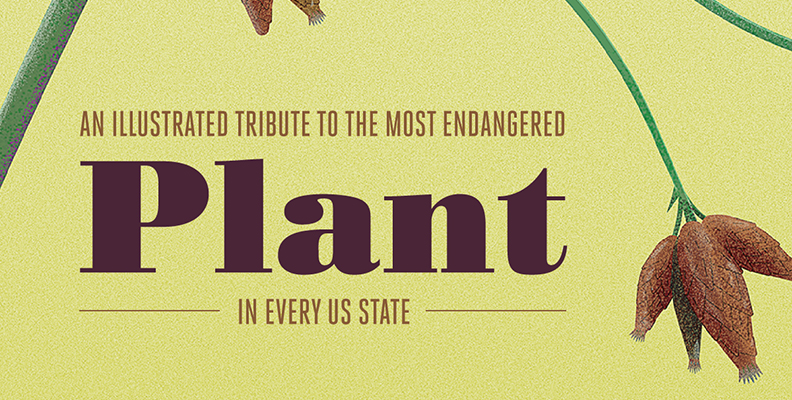
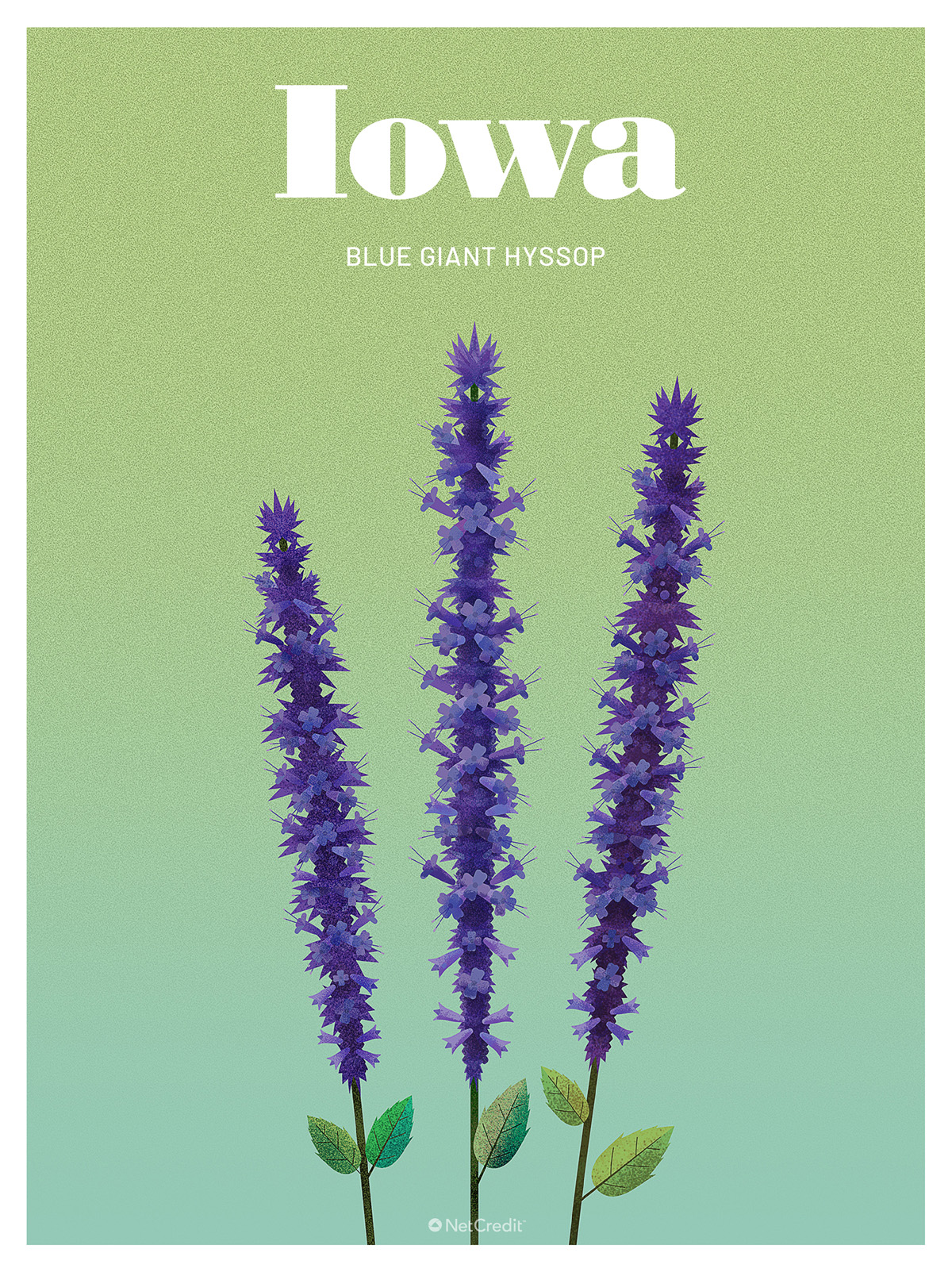 16. Kansas: Mead’s Milkweed
16. Kansas: Mead’s Milkweed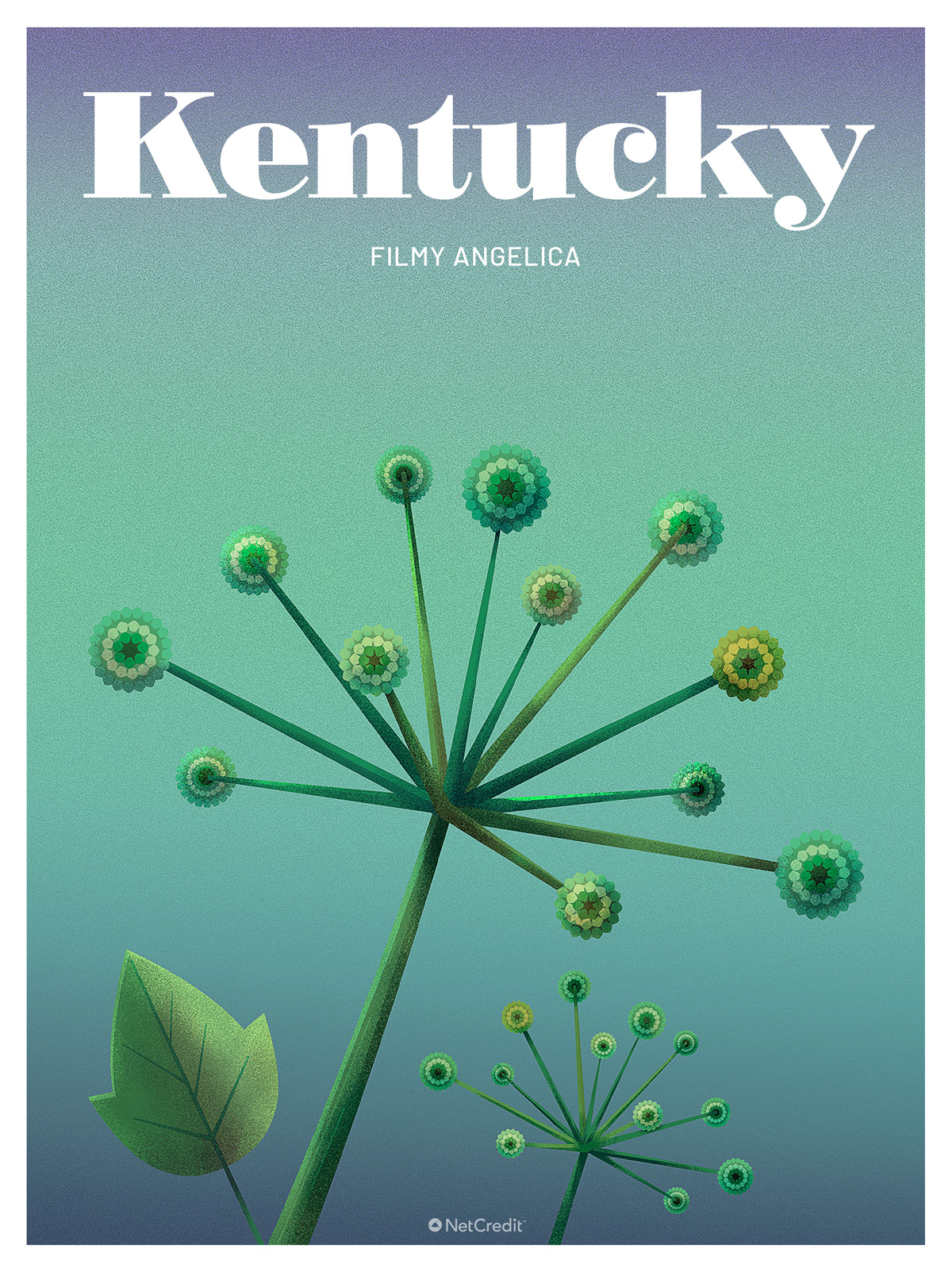 18. Louisiana: Louisiana Quillwort
18. Louisiana: Louisiana Quillwort
 30. New Jersey: Chaffseed
30. New Jersey: Chaffseed 34. North Dakota: Great Plains White Fringed Orchid
34. North Dakota: Great Plains White Fringed Orchid 36. Oklahoma: Prairie White Fringed Orchid
36. Oklahoma: Prairie White Fringed Orchid 38. Pennsylvania: Smooth Purple Coneflower
38. Pennsylvania: Smooth Purple Coneflower 39. Rhode Island: Dragon’s Mouth
39. Rhode Island: Dragon’s Mouth 43. Texas: Navasota Ladies’ Tresses
43. Texas: Navasota Ladies’ Tresses 45. Vermont: Auricled Twayblade
45. Vermont: Auricled Twayblade 46. Virginia: Streambank Bittercress
46. Virginia: Streambank Bittercress


